Shaping Youth Culture In Europe And Beyond - A Conversation With Daniel Pacitti
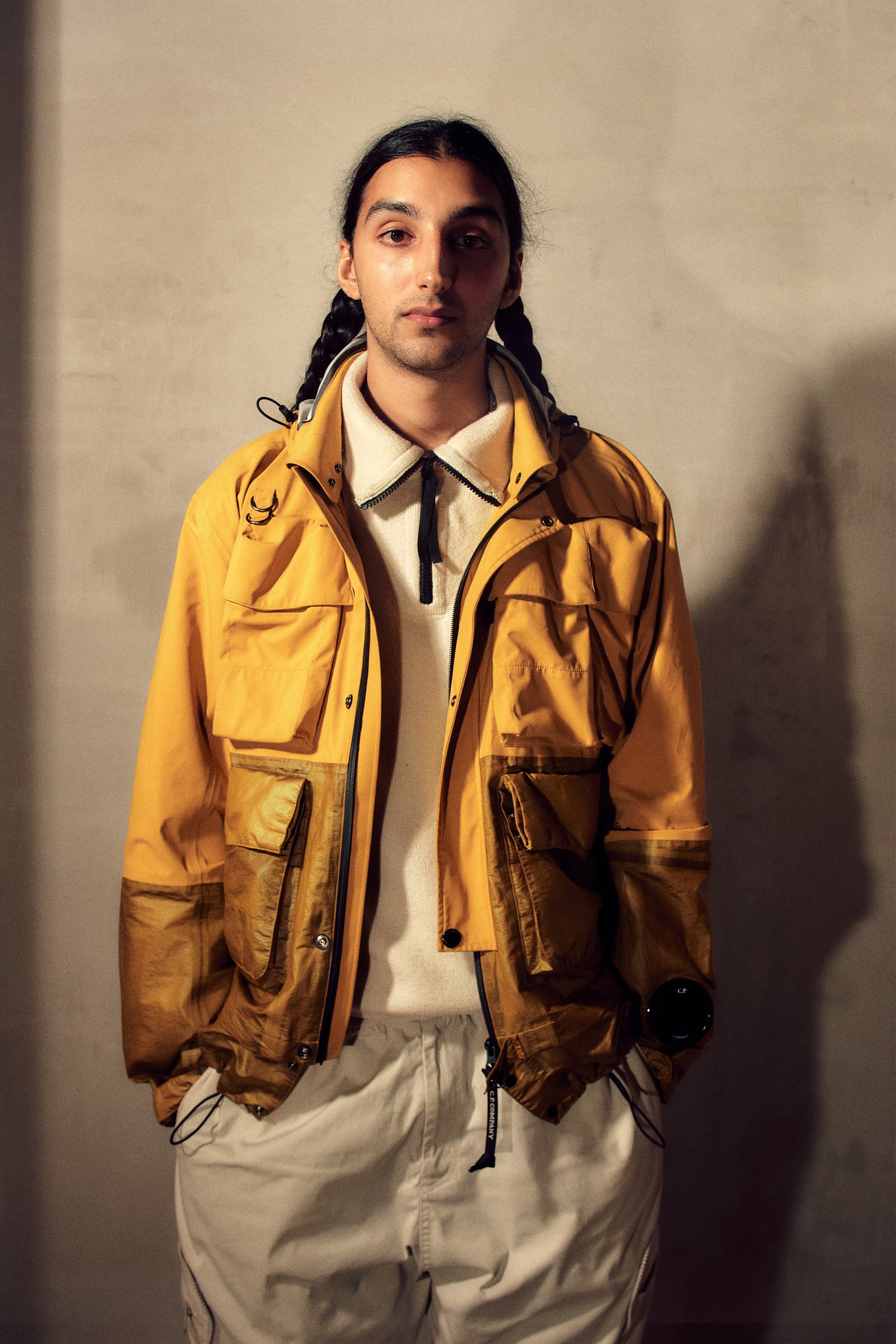
Certain people in culture, from fashion to music, help to orchestrate new movements. From Shawn Stussy trailblazing the streetwear scene to Hiroshi Fujiwara initiating the Urahara wave, there are certain people in the history of fashion that, without knowing it at the time, were cultural creators and curators that would help shape future generations. Now we are seeing a new wave of young creatives stemming from all corners of the globe. People who are pulling the strings and inspiring a new dialect with style and innovation; one of these individuals is UK stylist, designer, collector, and consultant Daniel “Dan” Pacitti.
Daniel Pacitti is one of the most prominent faces in the new generation, spearheading a new approach in the fashion industry. With an unparalleled understanding of global trends, styles, and youth culture, many brands have already looked to the 24-year-old creative for ideas and design. Ever since his early teenage years, he knew what was to come and actively shaped the understanding of what it means to be fashionable for a whole generation.
Dan’s style is diverse yet specific all the same. The young style icon combines function with time-forgotten vintage, muted colors alongside vibrant hues, and Americana style alongside eastern accents; he has always sat in between the space between effortless style and premeditated curation ever since the early days of his emergence into fashion and was one of the first we have seen rocking things such as the baggy military pants that are littered across Instagram today and vintage C.P. pieces that are now unicorns on the market.
To understand the importance of Dan’s impact, it’s crucial to understand how the UK is a driving force in fashion. It’s clear how the country’s fashion and subculture stream into his unique aesthetic. The island has always been a breeding ground for some of the most exciting and interesting subcultures. Over the past few years, Britain and London especially have taken over the European and global trends in streetwear culture. This development became highly evident with the recent Gorpcore movement and the emerging integration of functional and outdoor clothing into street style. While stars from all over the world like Drake, the Jenner sisters, or Bella Hadid have been caught in waterproof jackets or military trousers, the trailblazers of this trend came mainly from the UK, with Dan being a leading figure in this crowd doing it long before this style went mainstream.
It makes sense that functional and outdoor garments became part of streetwear in a country that's said to be always rainy. But British thought leaders have already shaped the youth culture for a long time. Jackets and technical tracksuits are deeply rooted in some of the British subcultures like the rave or chav culture, so it’s no wonder why things such as vintage outerwear that were cheaper for teens to afford or warm cargo’s fit for a rave underneath a bridge in -2 degrees would start to become fashionable amongst the youth.
Often those subcultures from neighboring or totally different fields have inspired some of the most influential trends born in the UK. Another good example is the Hooligan and casual culture that brought utilitarian styles with the likes of C.P. Company or Stone Island to the table, which brings us a full circle back to Dan. One of the pioneers, collecting and styling vintage pieces from the legendary Massimo Osti or Moreno Ferarri era, up to this day, he has a heart for the Italian sportswear brand. C.P. Company even featured him alongside names like Takashi Miike, Moreno Ferrari, and Angela Baraldi in their book “C.P. Company 1971-2021: An Informal History of Italian Sportswear,” released as part of their 50th anniversary.
A pinnacle moment in the UK scene would be when in 2011, Supreme opened its first store on European soil in ⅔ Peter street in Soho, London, working as a catalysator for an already boiling mixture of European streetwear. Facebook groups like the infamous “The Basement,” where kids from Europe [and beyond] got together to share their interest in fashion and subcultures, were the driving force behind a new wave that should change how brands looked at streetwear. One of the leading figures in the Basement was Dan, who inspired many kids with his stylings and first designs.
Most of the prominent heads in those groups would go on to work in the industry and bring their experiences and ideas to the tables of the big players. However, rather than staying in the spotlight, Dan decided to work creatively behind the scenes, making a real impact with styling, consulting, and designing for brands like Nike, Supreme, Arcteryx, and Stone Island. Nowadays, he lives in New York City and is one of the most prominent and promising minds in the European streetwear scene. Next to his work as a designer and stylist, he co-opened a store in London that expanded to Los Angeles in August 2022 and is set to have a new branch in New York City, too, in the near future.
It’s easy to say that Dan and his multidisciplinary approach played a vital part in the growing interest in the UK as a subcultural playground for brands and stars worldwide. The interest in British subcultures is now bigger than ever; music genres like Drill or Garage influenced the music we consume daily. The rave, outdoors, and roadman culture aesthetics can be seen in movies, music videos, and editorials published in the most significant magazines out there, and young designers from the UK are coveted like never before.
As one of the main people behind this development, we spoke with the man himself to get a glimpse of the whole Daniel Pacitti universe. We asked him about his story, what influence means to him, and what’s it all about with the duck emoji.
Thank you very much for taking the time to talk to us. Could you please introduce yourself to the Sabukaru network?
Hi, I’m Dan, and I’m 24. I’m currently living in NYC. I’m working on various design projects as well as the occasional styling job. I am working with my friend Elliot on a shop called 194 local, where we just opened our second store in LA. We are currently looking at spots in NYC to have a store there too. I’m also working on a brand called Cease with my close friend Ethan.
When did you begin to be interested in fashion, and what would you say sparked that interest?
From a pretty young age. I remember when I was in primary school, all the other kids had Ralphy polos. So I wanted a Ralph polo. From playing football from a young age, I always loved football shirts and boots. I still love to buy football shirts nowadays. It just snowballed into being interested in clothes and shoes. But now I’m at a point where I kind of started to sell everything I own. I don’t like having lots of things anymore. I’ve learned to appreciate an item without owning it or buying it for what I need it for and then moving on and getting rid of it instead of just collecting, collecting, and collecting. I feel like it’s kind of pointless having these collections. No one cares at the end of the day. At the moment, I must have, like what, 300, 400 pairs of shoes, god knows how many jackets, and loads of graphic tees and pants. Half of it I buy for reference, and then it just sits there. I’d say that I will wear it, but in the end, I wear the same thing every day. It’s just pointless. The only thing I collect now is t-shirts because they’re small and you always need a t-shirt to wear. I’ve also moved more into collecting weird pieces of folk art and objects I find at markets or on my travels.
You gained early popularity through the Facebook group “The Basement.” Can you take us down memory lane and tell us how it all began?
That was my introduction to buying and selling. Of course, there were other forums too, but when Facebook was the thing to be on before Instagram was even a thing, The Basement was an online community where everyone had shared interests. It was really cool; there were many like-minded people in one place, and from there, you could meet people and connect.
I was pretty young, probably around 15/16 at the time, so it was all a learning process. Discovering things you hadn’t seen before through conversations with others.
OGs might remember you in complete BAPE outfits….
Yeah, I loved BAPE. I loved it so much; I was all about collecting all the older BAPE things. I used to have a lot of weird BAPE stuff.
… before starting with reconstructed hoodies.
That was just from seeing the Kiko Stüssy stuff. I was a kid thinking, “let me do that as well.” So we did it with old band merch. We were buying it from eBay and doing it with weird band hoodies. The graphics were cool when you merged them together. Even though I look back at it now and think of it as a bit cringe, many people think about doing stuff but never do it. So I can look back at it and say, “at least I actually did it,” instead of just talking about it. I actually did it, learned from it, and got to the point where I am now. And even the people I did those hoodies with, I also met on Facebook, so I grew up on Facebook. I’m completely off it now, however.
Later you worked on the Nike x Basement Dunk. Can you tell us more about your first experience with big companies?
Even before that, I was doing focus groups at Nike. I was in meetings with designers where they would show us new products and ask us what we thought about them. At the time we were kids, we needed nothing else. They would give us a 50-pound voucher when they received consultancy worth thousands of dollars. You gotta start somewhere, and that’s how I learned about money and getting paid for stuff. It’s not about making money necessarily, either. If you’re picking up valuable knowledge from it, it's worth more money in the future rather than getting paid at that age.
What are the main things you have focused on lately?
Consultancy
Cease
Gentle Fullness
194
Styling
Travel as much as I can with my girl Sofia
Where did the story of 194 local begin?
That started when I was living in London. A mate told me of a Brick Lane store that sold lots of old Stone Island. So I walked in and met Elliot there. It was his shop, and we started talking. I bought some bits from there, and ever since then, we became friends and gradually got closer. Then he moved the shop a few doors down to where it is now. That’s where I began helping him do the shop, helping with the stock and doing collaborations, and bringing some people in—just growing the shop and trying to change how people buy vintage to it being more about the actual piece rather than the thing being hyped up. So for us, it doesn’t necessarily matter what brand it is. There’s a lot of weird stuff on display. Brands that people wouldn’t usually touch before – like Missoni seemed to become popular when we put them in the shop.
Obviously, all the brands have clocked on to it now, and kids have clocked on to it, but before then, it was just us finding cool vintage stuff that people were sleeping on. We put it in the shop, and people liked our innovative approach. It just snowballed from there. People love it now, and we’ve got tons of returning customers and loads of new people coming in every day, thanks to celebrities wearing our stuff like Bella Hadid. It’s just nice to have a shop. You meet so many interesting people from it. We love to meet people and just talk about stuff we’re interested in. Not even clothing; we talk about music, art, football, or anything with people.
Why’s it called 194 local?
Because the original shop was 194 Brick Lane. The address has now changed to 178D, but the name just stuck.
Even with the new store in Los Angeles…
Yes, 194 LA
Why Los Angeles?
Elliott got married. And his wife is from LA. So he moved there and is based there now. That’s the main reason. But we used to go out there a lot anyway to get stock because there’s so much good vintage out there. The store’s concept is basically the same as the one in London. The stock is more designed for the LA consumer as it is obviously warmer there. So there’ll be more t-shirts than jackets, more homeware, more incense, and weird ceramics. 194 is not in a category. We can sell anything there. There’s no limit or rules for it.
Where do you find inspiration for stock, and what role does your global network play?
Italy, Japan, and America are the main inspiration for stock. We have contacts in all those countries we’re constantly buying from. We also buy what we like so we’re inspired by our interests, whether music, sport, or movies. We’re not stressed about buying particular brands. The piece can be from a cringey brand, but we would put it in the shop when they have amazing old pieces. If the piece is good, then it doesn’t matter what brand it is. That way of thinking has helped a lot. It’s just funny for us to see when we’re buying weird brands and then see all the other kids starting to clock on to it and doing their own archive pages—that way, we see that we’re doing something right.
Some pieces you sell at 194 really went off. Consider the military overpants or the ACG skirts worn by celebrities like Bella Hadid. As a stylist, you create looks via direct styling; as a buyer, you act more like a curator that shows people which garments go well together. How does it feel to influence through buying compared with influencing through styling?
It’s essentially the same thing, and that’s what’s fun with 194. We buy stuff we think is cool and style it how we think it is cool. It’s really cool to see how popular things become after we put them in the shop. It shows that we must do something right, as people love it. But, of course, people always want something different, and the best way to get that is through vintage; it’s just tricky to maintain the stock and have a constant flow of new items, but that’s all part of it.
You also sell pieces from our friends at Geek Out store. Can you name some more of your favorite stores in Japan?
We do, indeed. Naoki is the best! He actually did some bandanas for Cease as well. We’ve got our own camo at Cease, and he printed it for us.
It’s actually hard for me to say what my favorite stores are in Japan as I haven’t been able to visit since 2017, but hopefully, I’ll be able to come and visit soon. I like what the guys at blue room and ZSC do, and there are a few other similar accounts on Instagram too. There are also a bunch of other stores out of Tokyo that I follow on Instagram and would love to visit when I get a chance.
Overall you have always had a heart for Japanese brands. So what makes Japanese brands and designers special?
I love their attention to detail and appreciation for quality and precise manufacturing. It’s always the most tasteful and well-thought-out stuff. I’m a big fan of early Hiroshi stuff. It was all so ahead of its time, and its recent gain in popularity shows that.
Sometimes it seems like products gain popularity overnight, but how trends become trends is complex and part of a longer chain. What do you think initiates such trends, and how do you think trends emerge?
Sometimes it’s as simple as one famous person wearing something, then everyone copying, and sometimes stuff stemming from the everyday world like political events and current affairs.
How did the collaboration with Levi’s SilverTab come together?
That came through the connection with Leo, who works at Levi’s. We’ve always been selling Silvertab, so it just made sense. We got the chance to overdye some pairs. There will be more stuff to come with Levi”s in the future for sure.
What are you doing with Cease? Please introduce us to what seems like your latest project.
That’s my passion project I do with my mate Ethan in our spare time. Ethan has helped with Gentle Fullness as well. I’d love to do it as a full-time thing as well and do other things on the side. We’ve been working on it for ages, and we were just very fussy about how we wanted it to be, and we don’t want to be forced into making stuff every season just for the sake of making it. I think many brands fail when they start out, pop off and then be like, Damn, we have to keep giving people stuff. With Cease, it’s more like making a product so good that people would always buy it. We are just starting it off at the moment, and hopefully, people will like it when it’s ready. Cease isn’t just clothing, either. Ethan and I are both really into music, so it will be output for our music taste through mixes and guest mixes in the future from friends whose tastes we also respect. It won’t just be all online either; we want to start doing parties around the world and in all the different big cities.
What’s the story behind the first product you dropped – hoodies made from camber fabric?
The camber fabric is an old-school American sweatshirt manufacturer famous for cross-weave knit. The machines they have to produce this fabric, no one else has. It’s obviously big in Japan, as they love “Made in America stuff.” We managed to get camber fabric and did our own version of it. It’s called an after-hood, essentially a sweatshirt that you sew a hood onto. We dropped that in October. The whole point of Cease clothing was to draw attention to old-school manufacturing techniques that are dying out because of fast fashion.
With Soundcloud mixes online, it looks like more than just a brand…
Yes exactly! It’s like a place for us to share mixes, music, films, art, and stuff we’re interested in and put others on to it. I don’t want to gatekeep cool stuff I am finding out about. I want other people to get inspired by it as well.
How did you get into styling initially?
I’ve always been buying and collecting clothes, and one day my friend Ty asked me if I wanted to start dressing him, and it kind of went from there, I guess. I did some smaller projects before that. I did a thing for New Balance, like a Popeye-style city boy thing. Then I did something for converse, but nothing crazy crazy, just simple styling. So the thing with Ty was the first time I got to do personal artist styling, I guess. I don’t do as much music styling nowadays because many artists are too picky and just want to be put in certain brands, which isn’t really styling; it’s more just sourcing stuff they like. They want to look a certain way, and it’s more me getting paid to source stuff and dress them than me dressing them the way I think they should dress, which in my eyes, is what styling is. Actually, being styled and not saying, ah can you get me this, this, and that? That’s essentially personal shopping - which is also a job. For artists, it will also be more like wardrobe credit instead of styling, which is also cool. But yeah, I’d love to find maybe a [female] artist to sit down and help to style, but I just haven’t found that person yet. The reason why the thing with Ty went so well was that he was so open to me doing whatever. It’s also a credit to him for trusting me and knowing how to hold himself well in clothes.
You have a very distinctive visual language. What’s your vision when it comes to styling? What makes a Daniel Pacitti styling?
It’s hard to say, really. It varies on who the artist is. I want them, whoever it is, to feel comfortable wearing the clothing in themselves, and it has to suit them. So I can’t necessarily dress two people in the same stuff because one person might look better in the stuff than another. I love to wear many different things personally, but when styling, it’s just about making the clothes look good on the person wearing them and ensuring the fits and proportions are right. The person also has to know how to wear the clothes and not just be like a manikin.
And when you style yourself?
Part of why certain stuff with Ty was easier to do was because it was like dressing myself. It was just like finding something really crazy and putting it on him. The stuff just looked good on Ty.
But there aren’t specific things. There are certain colors I like to dress in myself. My nickname Ty calls me is “Duckman,” my PlayStation name. The name stuck cause I think ducks are cool. I still dress in duck colors, so lots of greens, oranges, greys, yellows, and weird colors like that all put together. But I’ve done shoots with Ty where I didn’t even dress him in fashion stuff. I dressed him up as a teddy bear before, for example. So it varies on what the shoot is. So there isn’t like a necessary style.
As a stylist, many people see your work, but sometimes not the credit. How does it feel to pull strings in the back while still having such a direct impact?
I’m really happy to just be in the background pulling strings. I don’t really care too much about being the center of attention. It’s just nice to see that people appreciate stuff that I’ve worked on. It’s also nice to see people I’m working with grow and gain more exposure through the work.
Could you please show us some of your favorite stylings so far?

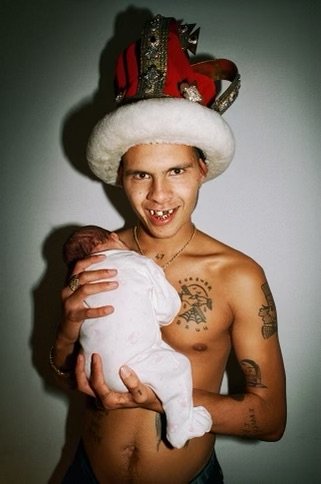
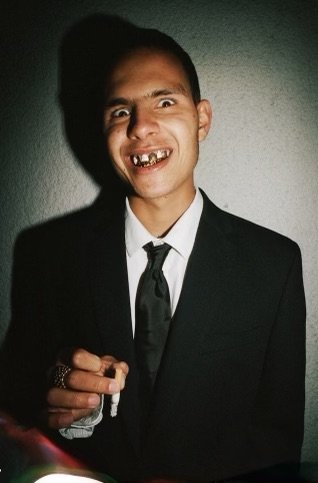
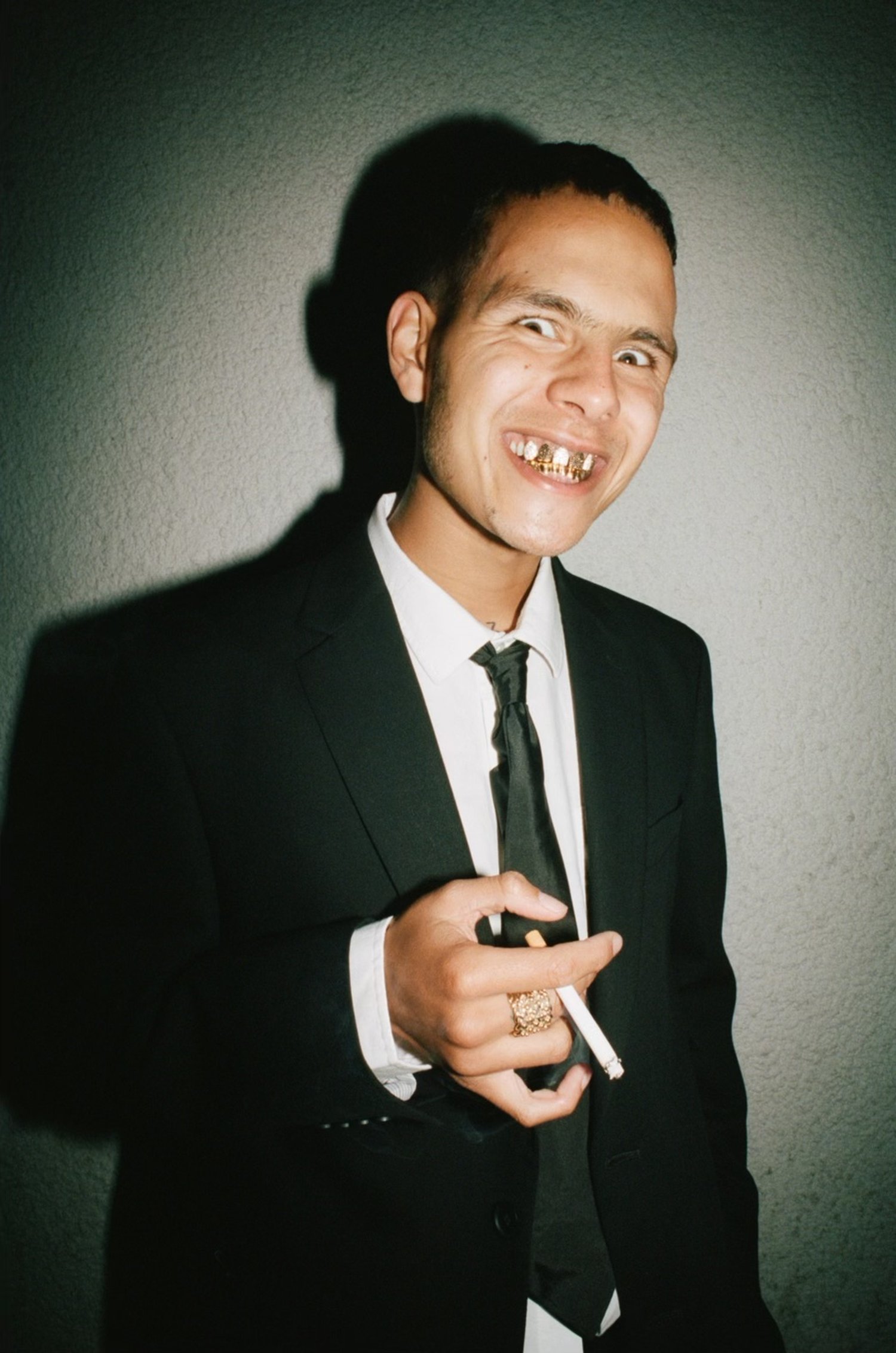

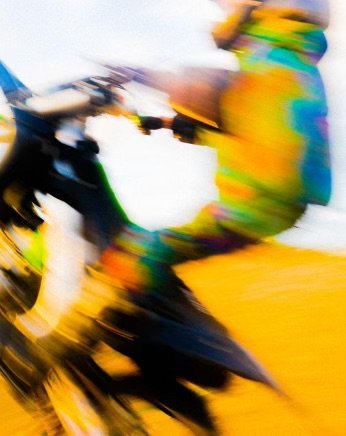
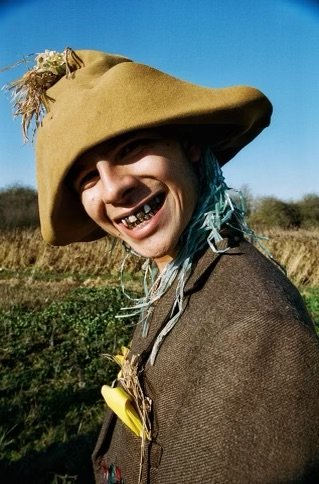
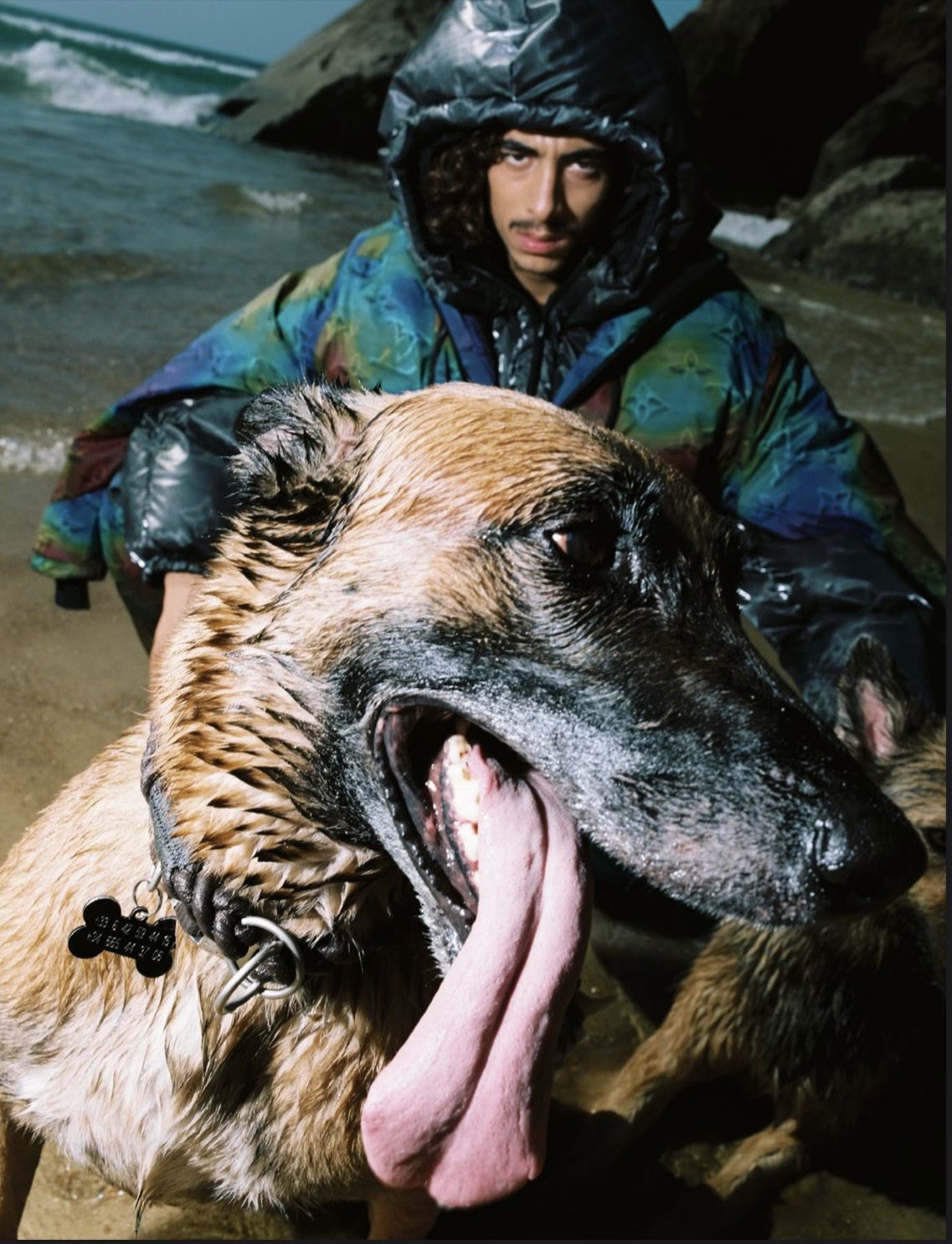
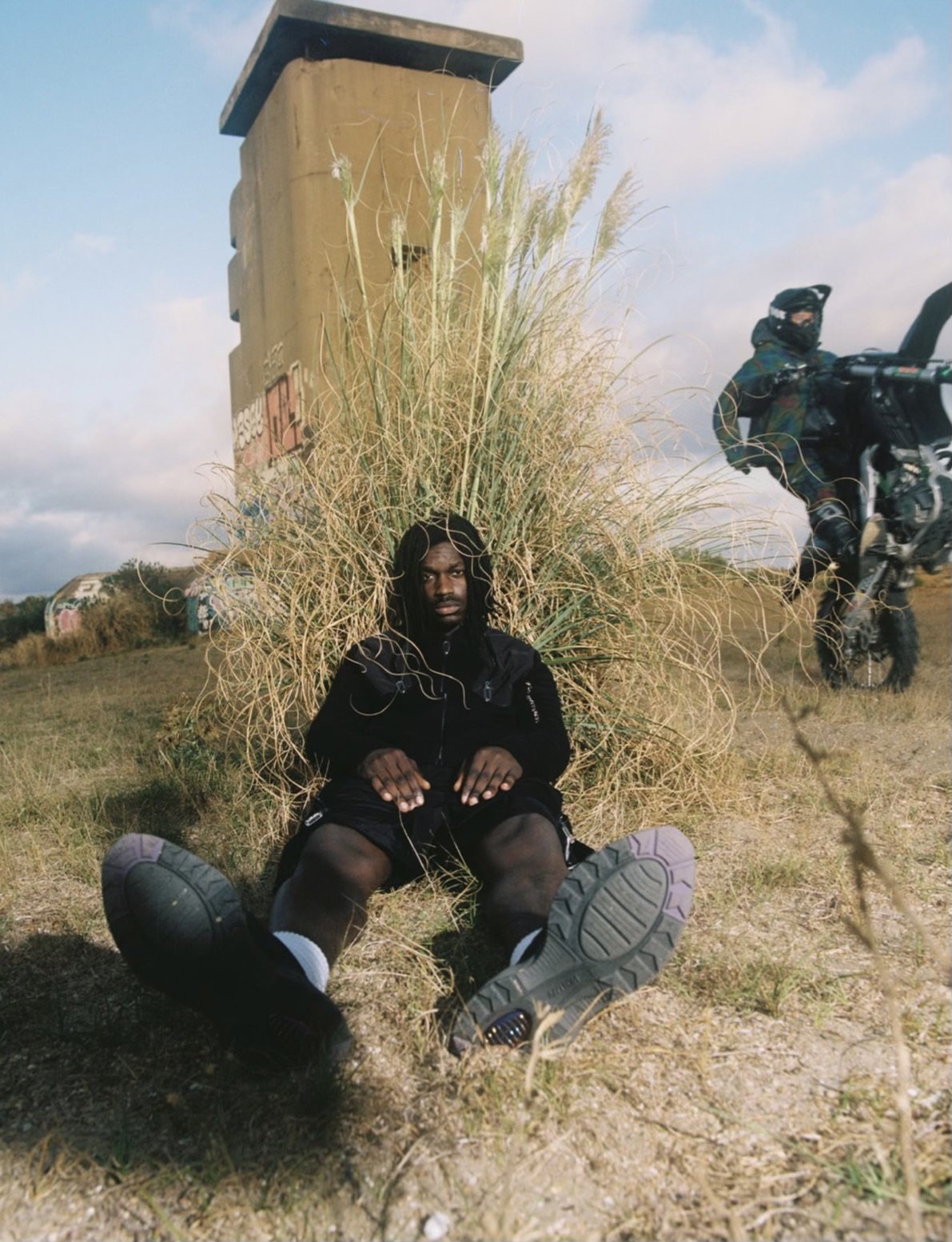
You styled LV2054 for KALEIDOSCOPE. How was the work with the late Virgil Abloh?
Working with Virgil was nothing but a pleasure. He was one of the nicest people I’ve ever met and was nothing but supportive and caring every time I spoke with him. It fascinated me how he even had enough time in the day to reply to messages or reach out, even though he must have had god knows how many things going on in his life. He would reach out to you out of the blue, even when you’d not expect it. I remember that shoot [KALEIDOSCOPE] where I hadn’t seen the photos. I reached out to the magazine people, but they wouldn’t get back to me. So I texted him, and he sent me the images within a minute.
He really was one of a kind and had such a strong passion for music and fashion, and culture in general. I remember the early days when we were touring with Ty, and he had a show in Scotland at the same time as Ty. Ty was only playing a 100/200 cap venue; he showed up and watched the whole set. He really loved music. He was always looking to give young people opportunities, and he’d often ask me if I knew of any young emerging talents he could work on projects with at LV and Off White. I can’t say enough good stuff about him. As a person, regardless of his work, he was amazing. I personally value that more than any kind of career stuff. Not what they’re doing, but how they are as a person. Because the fashion industry is full of ignorant people, Virgil was a fundamental change and a breath of fresh air.
You don’t only work with brands but also with artists. How did the connections with Slowthai and amine come together?
I’d be listening to Ty’s music on Soundcloud before we became friends. I actually heard a DJ playing one of his songs at a Maharishi fashion show, which must have been at least 4/5 years ago, and I remember messaging him after that and saying how it was the first time I’d heard his songs played in public. After that, we used to speak on Instagram quite a bit and gradually became closer. Amine came via my friend Liam MacRae. He was helping with his creative direction then, and we were already friends, so he brought me on board to style him for a video. Amine is also a good friend now too. He’s a super cool and chill guy. As I’m really into traveling with my girl, and he’s the same, we would always chat about that, recommending places. It’s nice to see them both doing so well and growing.
Your styling for Euphoria star Angus Cloud went viral on the internet. So how did you guys meet?
That one was through Camera Club in NYC. I’d just shot an editorial with them the week prior for another brand, and then they reached out asking if I wanted to style Angus for The Face. They’re super friendly people, and I’m grateful for the trust and opportunity. Angus is also a really chill guy, and it was a pleasure to work with him too.
Along the way, what shaped your understanding of style? What were your influences?
Always my older friends. The majority of my friends have always been older than me, so I’ve learned a lot from them putting me on to things. My mum’s from South Africa, and when she was dressing me as a kid, it was a lot of crazy colors. From that, I’ve never been afraid to wear weird colors because she’s done the same. That mixed with me discovering stuff on my own and just wearing stuff I like for what it is. When I was being brought up as a kid my parents would constantly be showing us different art and artists and playing us a huge variety of musicians and genres so I learnt a lot about style through that too.
A lot of brands recognized your work and impact. From Supreme, Asics, and Reebok to CP Company and Stone Island, you worked together with some of the biggest players in the industry. How do you bridge the various brand DNAs with your visual language?
99% of these brands I work with are part of my visual language anyways, so I just style stuff the way I would want to wear it myself.
How do you see the state-of-the-art in functional fashion? We saw a rise in Gorpcore and outdoor style over the last years. Where do you think this trend will head or manifest?
It wasn’t really a surprise when that whole trend emerged because everyone had been locked up inside during covid, so when the curfews were lifted, people just wanted to be outside and had a new appreciation for it. In terms of clothing, I think people will move on to something else eventually, but at the moment, it doesn’t seem to be slowing down at all. It’s nice to see good brands getting recognition for making good products, even though some of them have changed their ways to appeal to new markets, which has been a little cringey to watch.
What kinds of garments and styles are you most interested in now? What brands do we have to keep an eye on?
I’ve been buying an array of different kinds of garments lately, mainly for referencing on various projects. Personally, I’ve been collecting old reggae and dub tees, so it’s not really a specific brand.
Let’s talk about your work as a designer. From reconstructed merch articles, like hoodies over the Basement x Nike Dunk Low, to the job with Story Mfg. and Gentle fullness: Can you explain your growth and learnings as a designer? Are there things you would do differently now, and what do you love to look back to?
I have no qualifications in design, so I’ve learned a lot from just doing stuff and trying things out. I design using references for most things and then tweak the item to how I’d want it to be. Most things have already been designed. It’s just about bringing them back at the right time and putting your own spin on them, whether it’s using new fabrications or colors or adding updated detailing and function. I’d love to learn how to pattern cut in the future and get better at tech packing, but I’ve been lucky enough to be surrounded by people who can already do that stuff, so I’ve never needed to do it myself yet.
More recently, you started a new brand with Saeed and Katy from Story Mfg. But even before you were working together with them for Story. How did you guys meet?
We met in 2016 when Saeed asked me to model for Story, and we became friends from there. We always had a shared interest in certain silhouettes and brands, and we’d talked about doing a brand together as a sub-brand of Story for quite a while. We finally had the opportunity to do it with Gentle Fullness, and it’s been a really fun process so far.
Where does Story stop, and where does Gentle fullness start?
Number one: I have no say in the design with Story. With Gentle Fullness, I have a saying on the design. While Story would have many things embroidered on it and many details, Gentle Fullness is more straight to the point and focused on shapes, print, fabrics, and color. We started it off as collections, and now we’re changing it to “the piece is ready when the piece is ready.” We’re not going to force ourselves into making stuff just for the sake of making it. So if there’s a pair of trousers we want to make that we think are cool, we make them, but there will be only one pair of trousers and not four different options. Gentle Fullness is just a lot smaller and more niche, with direct collaboration between them and me. So some stuff we wouldn’t do for story basically, we would do for Gentle Fullness.
What kind of garments do you mainly create as a designer, and what's the hardest to work on?
We do all kinds of products. Literally every garment possible and accessories. They’re all equally as hard to create. However, accessories are more manageable, as the fit isn’t as hard to perfect. Trousers are probably the hardest to work on. Getting the lengths and widths right, especially for Gentle Fullness, where you have to bear in mind that there will be a size break. So these are hard. Also, dyeing with different colors on different fabrics. Some colors may shrink the material, so predicting sizes is hard. Production with Gentle Fullness, in general, is tricky because of how precise it is and the manifesto. But other than that, everything is chill.
Recently, the idea of “functional fashion” became a big point in the industry. Do you consider functionality an essential part when designing a piece?
Not for everything. It’s obviously cool if you can add it in, but I don’t think it needs to be on everything. Sometimes even if something is functional, no one’s actually using it for that function.
Did you get into functional clothing because of the functions or something else like fits?
Bit of both. It depends on what you classify as functional as well. It was good with the whole outdoors thing, as we live in the UK and it rains a lot. So it was good to have GORE-TEX stuff that actually keeps you dry. But other than that, I don’t know what functional stuff I’ve got. I own “techy” stuff like a jacket from the UK brand Vollebak. I’m interested in them science-wise. Just because I got interested in manufacturing. It’s not really functional, but it’s super exciting, manufacturing and innovation-wise.
Can you show us some of your favorite pieces of clothing at the moment? Stuff that inspires you, that you like to wear, or that you simply enjoy looking at?
Inspiration-wise, a lot comes from old military clothing, which is functional with an actual purpose, not just a pointless function. Other than that just a lot of random vintage. When we first went to India, we went to Thailand before and went through Chatuchak market in Bangkok, searching for vintage pieces. A lot of the time, it can be unbranded or from brands, you haven’t even heard of. We look for pieces with cool features that can be a cool pocket, or even the color can be good. So not necessarily brands in particular. I really love old Goodenough, but I don’t necessarily reference it. I just rate their old stuff. I think it was well ahead of its time. Obviously, I rate Stone Island and C.P. Company too. Again I’d say we don’t draw a lot of inspiration from it for Gentle Fullness. But if so, it’s primarily old, old, old C.P. from when Osti / Moreno Ferrari were designing.
You already gave a lot of insights throughout the interview. But what’s your advice for the young people out there who want to work in the creative field?
Read books. Don’t be afraid to work for free if you’re learning valuable things along the way. Take risks. Meet as many people as you can. Travel as much as you can. Most importantly, do what makes you happy.
A classic last question: What is next for you? From London to New York, designing, styling, and 194, is there anything else on the horizon you want to push forward in the following years?
It’s basically Cease. The new thing I’m going to push. Then there are collaborations coming out with 194 and other brands. We just had a Reebok collaboration coming out, and other apparel will follow. I’m not really buying anything new, not looking for new stuff. I’m trying to cut down on everything, just focusing on not having to own stuff in order to appreciate it. That’s the main thing.
About the author:
Peter is a writer and senior editor based in Berlin. In his studies, he began to dive into Japanese culture and its perception overseas. Partially located in Tokyo, he continues to research culture and whether it’s possible to eat more than two bowls of ramen a day.








